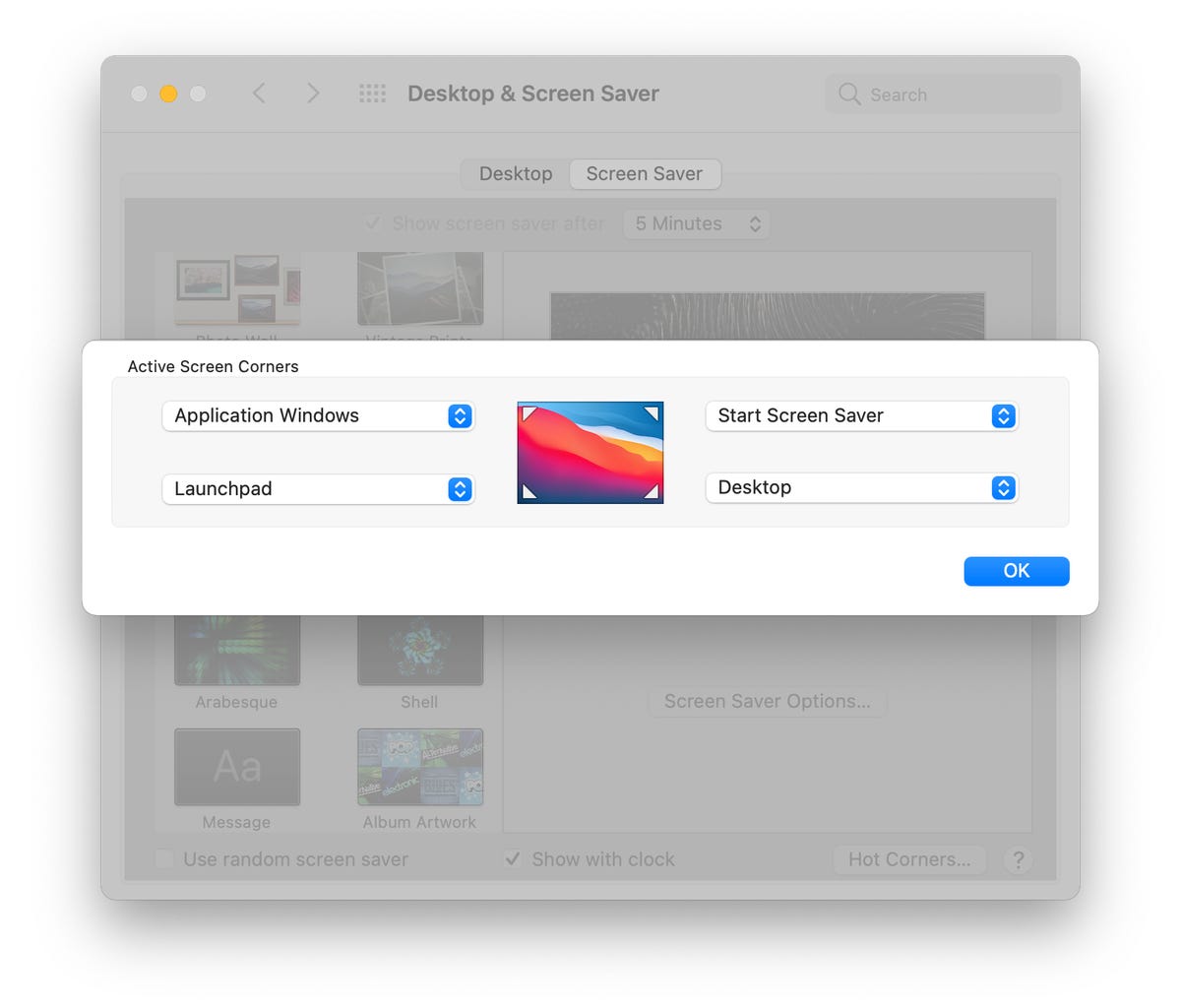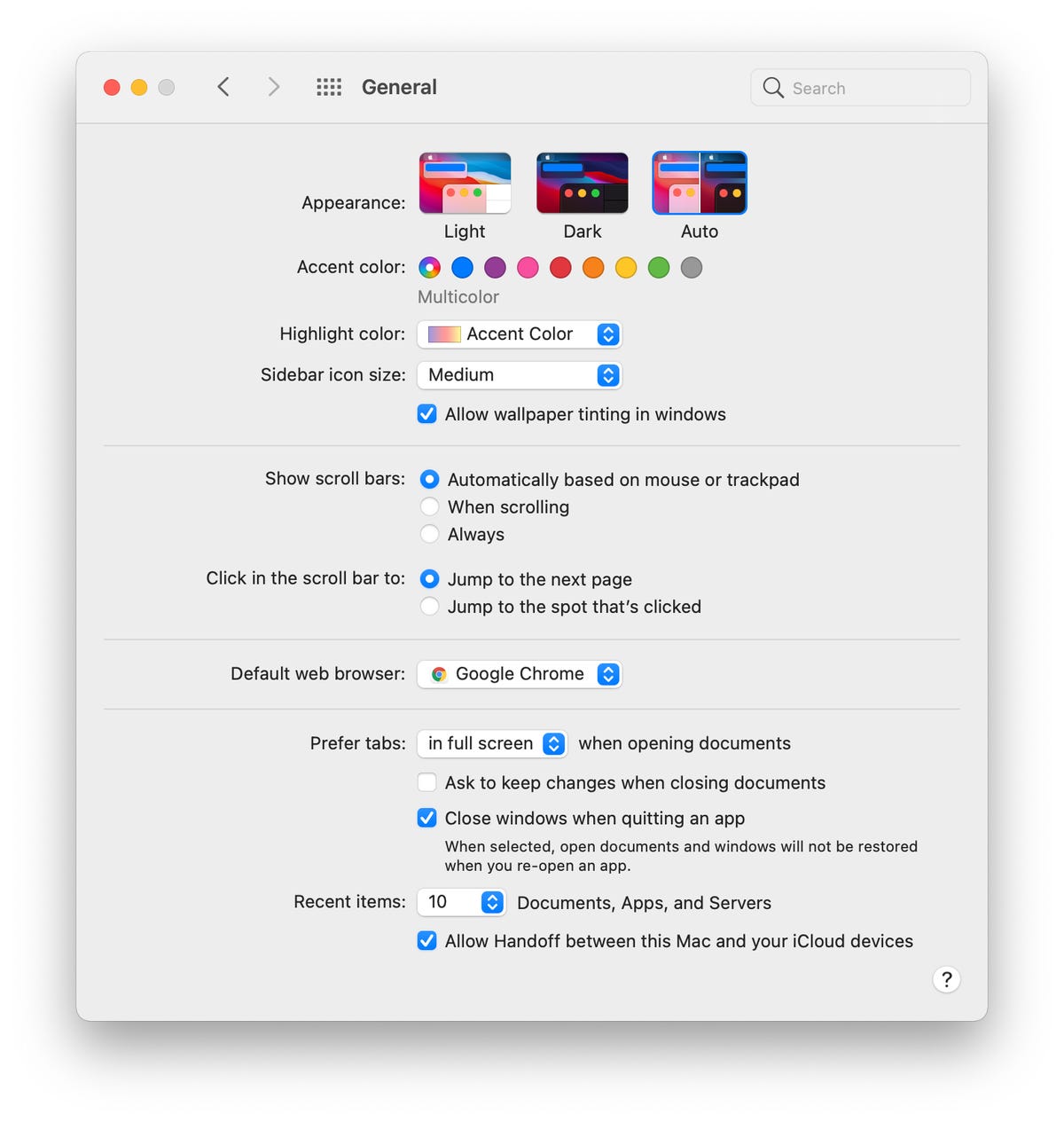If you’ve ever used a Mac, you’ve probably realized how Apple puts a lot of emphasis on making its computers easy to use, intuitive and secure. Many of your Mac’s default settings are there to help make using the device as straightforward and convenient as possible, but you also have a lot of options to tweak settings and tailor your experience beyond what’s offered by default.
If you want to enhance your privacy and productivity on your Mac, you can change various MacOS settings. We’ll show you where to find these settings, how to change them and why they’re important.
Here are eight MacOS settings to change if you want to boost your productivity and privacy.
Automatic software updates
Keeping your MacOS up to date is one of the easiest and most effective ways to stay secure and improve your privacy online. It’s important to keep your operating system up to date because updates will patch known security vulnerabilities, keeping you safe from someone potentially exploiting vulnerabilities on your Mac. And when you set your Mac to automatically keep itself up to date, you don’t have to remember to constantly check for updates manually.
To enable automatic updates, click the Apple icon > About This Mac > Software Update > Automatically keep my Mac up to date. From the Advanced menu, you can also set your Mac to automatically download and install MacOS and app updates from the App Store.


CNET/Screenshot
Hot Corners
Hot Corners are customizable shortcuts that make navigating and activating certain functions on your Mac easier. After setting them up, accessing Hot Corners is as easy as moving your cursor to one of the four corners of your screen. For example, I have my Hot Corners set to show all application windows (top left), activate my screensaver (top right), navigate to my Launchpad (bottom left) and show my desktop (bottom right).
To activate Hot Corners, click the Apple icon > System Preferences > Desktop & Screensaver > Hot Corners. Then you can select your preferences for which action to take for each corner of your screen.


CNET/Screenshot
Adjust your battery settings
Mac battery replacements are costly and complicated, but Mac’s optimized battery charging feature can help you get the most out of your device’s life. This feature learns your daily charging routines and holds off on charging past 80% until you need to use your Mac on battery.
To enable this setting, click the Apple icon > System Preferences > Battery > Optimized battery charging.


CNET/Screenshot
Require password immediately after sleep or screensaver
If you’re headed back into the office or working from a public place, it’s imperative that your Mac is properly secured. Make sure your Mac is locked whenever you step away from it and that you require a password to get back in once it goes to sleep or the screensaver is activated. If you don’t enable this setting, anyone with physical access to your Mac could also gain access to the files on the device, any applications or services you’re logged into and other information like online account logins and passwords.
To enable this setting, click the Apple icon > System Preferences > Security & Privacy > General. Then check the box next to Require password after sleep or screen saver begins and set it to immediately.


CNET/Screenshot
Encrypt your disk with FileVault
Make sure your disk is encrypted so you can protect your files and sensitive information from ending up in the wrong hands in case your Mac ever gets lost or stolen. Apple’s FileVault feature makes encrypting your Mac simple.
To enable FileVault, click the Apple icon > System Preferences > Security & Privacy > FileVault. Click the lock icon, enter your password and click Turn On FileVault.


CNET/Screenshot
Enable Night Shift
Staring at a bright, blue screen all day can be bad for your eyes and can disrupt your sleep. Night shift saves your eyes by shifting the colors of your display to the warmer end of the spectrum. You can set Night Shift to activate automatically from sunset to sunrise, on a custom schedule or manually turn it on at any time.
To enable Night Shift, click the Apple icon > System Preferences > Displays > Night Shift.


CNET/Screenshot
Automate Do Not Disturb
Use Do Not Disturb mode to combat daily distractions or make sure you’re not disturbed after clocking out. When turned on, the Do Not Disturb function puts app notifications on hold.
To automate the Do Not Disturb feature on your Mac, click on the Apple icon > System Preferences > Notifications > Do Not Disturb. From this window, you can set the feature to engage automatically during a certain time of day, when mirroring to a TV or when the screen is locked or the display is sleeping.


CNET/Screenshot
Change the default web browser
Your Mac comes with Apple’s Safari browser pre-installed. But if Safari isn’t your preferred browser, you can easily change your default browser to Chrome if that helps you be more productive or to a more privacy-focused browser like Brave.
To change your default browser, click on the Apple icon > System Preferences > General. Then set your preferred browser from the drop-down next to Default web browser. Just make sure you’ve already downloaded your browser of choice so it will show up in the drop-down when you go to change it.


CNET/Screenshot
For more MacOS tips, check out CNET’s advice on what to check for and change when setting up a new MacBook and how to flex your superpowers on Mac. If you’re upgrading to a new Mac, be sure to check this walk-through on how to transfer your files and apps from your old Mac. And once you’re all set up, take a moment to change these browser settings to protect your privacy.




